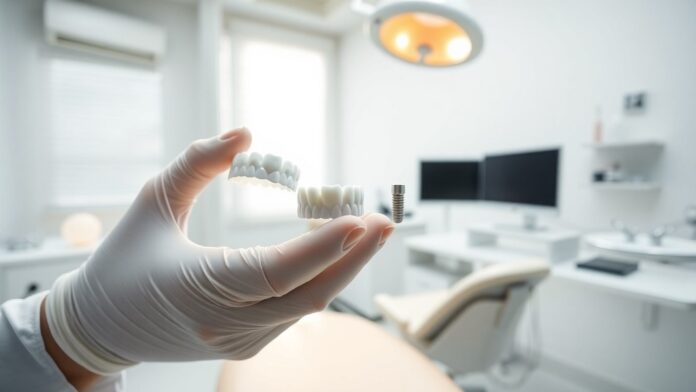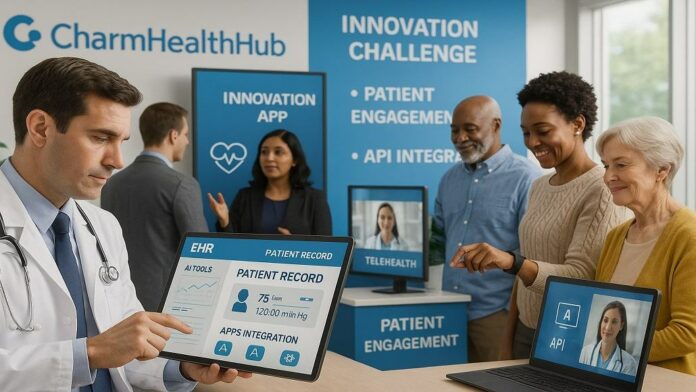Introduction
The restoration or enhancement of a smile can be achieved through various dental procedures. Among these, dental implants and dental crowns are considered the most significant innovations in modern dentistry. Although both procedures aim to bring back appearance and functionality to your teeth, they address different issues. This extensive guide delves into every facet of dental crowns and dental implants—from definitions and types to costs and expert insights—to help you make an informed choice which solution is the best fit for your dental needs.
Dental Crowns Explained
A dental crown is a custom-made cap placed over a damaged or weakened tooth. A crown “restores a decayed, broken, weak or worn‑down tooth,” per the Cleveland Clinic. Crowns can protect teeth after root canal treatment, cover up discolorations, and recreate a broken tooth. Essentially, crowns shield a tooth when it is too badly damaged for a filling.
Crowns are an ideal option when:
- The tooth has suffered from extensive decay.
- A tooth is cracked, chipped, or fractured.
- a tooth has undergone root canal treatment and needs protection.,
- A dental bridge needs support from a natural tooth with damage on one or more sides.
Types of Dental Crowns
Different types of crowns are made for dentistry. Each type varies in pattern and material, durability, and aesthetic values. Below, you can find a table column summarizing the common types of crowns along with an approximate estimation on the durability range and price range (note that the price range varies by region and clinics):
| TYPE | MATERIAL | DURABILITY | COST |
| Porcelain Crowns | Ceramic | 10 to 15 years | £125 – £160 |
| Zirconia Crowns | Zirconium | 15 to 20 years | £160 – £200 |
| E-Max Crowns | Lithium Disilicate | 15+ years | £215 – £260 |
| Metal Crowns | Gold/Alloy | 20+ years | £140 – £160 |
These crowns vary in appearance and performance. For instance, porcelain crowns provide outstanding aesthetics for front teeth while metal crowns are extremely durable for back teeth. Similarly, zirconia crowns have gained popularity due to their strength and natural look.
Prices and Packages for Dental Crowns
Dental crown packages, especially in dental tourism hubs like Turkey, often include more than just the procedure. These packages might provide:
- Initial consultation and diagnostic imaging (X-rays, CT scans)
- The crown fabrication procedure
- Follow-up visits and adjustments
- Additional services such as accommodation and transportation (for international patients)
An example pricing is kinda strange, but the table from Turkish clinics is outlined below:
| PACKAGE TYPE | SERVICE DETAILS | COST |
| Standard Porcelain Crown | Consultation, X-ray, crown installation, and follow-up | £125 – £160 per tooth |
| Zirconia Crown Package | Includes premium zirconia crown, consultation, imaging, adjustment, and short hotel stay | Starting from £160 |
| E-Max Crown Package | High aesthetics crown with natural appearance, plus package deals with accommodation | £215 – £260 per tooth |
| Full-Mouth Crown Restoration | Includes crown installation for an entire dental arch with full pre- and post-care | Starting at £1030 |
Includes crown installation for an entire dental arch with full pre- and post-care
Starting at £1030
These competitive prices make Turkey an attractive destination for those seeking quality dental work at a fraction of Western prices. Learn more about dental crowns in Turkey by exploring offerings right for you.
Dental Crowns in Turkey
Turkey stands out due to its blend of Turkish dental clinics that are celebrated for using modern materials and state-of-the-art technology. Their services are designed for efficient treatment and minimal waiting times, making it an ideal option for international patients looking to combine dental care with a short vacation.
Patients looking for package deals in Turkey can expect:
- Comprehensive consultations with digital imaging.
- Tailored treatment plans featuring a variety of crown materials (porcelain, zirconia, E-Max).
- Inclusive pricing that covers the procedure, follow-up visits, and occasionally even accommodation and transfers.
- The packages are not just affordable—they also come with guarantees for quality and durability, ensuring that your investment in your smile lasts for many years.
Dental Implants Explained
The procedure for dental implants is a wonderful choice for the treatment of missing or severely deteriorated teeth. Unlike dental crowns that cover an existing tooth, dental implants involve a surgical procedure and consist of various components:
- Implant Post: Usually made of titanium, this serves as the root, inserting directly into the jawbone.
- Abutment: A connector piece that attaches the implant post to the crown.
Types of Dental Implants
There are different kinds of dental implants suited to various dental conditions and bone densities. Here’s a summary of the main types along with typical materials, durability estimates and associated cost ranges:
| TYPE OF IMPLANT | DETAILS | COST (EUR) |
| Endosteal Implants | Titanium implant placed in jawbone; long-term solution with proper care | €200 – €400 |
| Subperiosteal Implants | Metal alloy framework placed under gum but above jawbone; medium durability | Starting from €267 |
| Zygomatic Implants | Titanium implant anchored in cheekbone; used for severe bone loss cases | Starting from €667 |
Prices and Packages for Dental Implants
Dental implants are regarded to be honest, as a long-term investment in your overall oral health. Although the initial cost is higher than crowns, implants provide durable outcomes and function similarly to natural teeth. They’re available through various package deals that may include:
- A full assessment with X-rays and CT scans.
- Surgical placement of the implant post.
- Follow-up appointments and final crown placement.
- Additional procedures, such as bone grafting, if necessary.
A simplified pricing table for dental implant packages consist of
- Package Type
- Service Details
- Price (Local Currency)
- Single Tooth Implant
- Includes implant fixture, abutment, and custom crown; consultation and imaging
| TYPE OF IMPLANT PACKAGE | DETAILS | COST (EUR) |
| Single-Tooth Implant | Titanium implant for individual tooth replacement with consultation and restoration | €200 – €500 per implant |
| Multi-Tooth Implant Package | Covers multiple implants with one-time consultation, surgery, and full restoration | €1,333 – €5,000 (full-mouth) |
| Implant with Bone Grafting | Designed for patients needing bone grafting; includes diagnostics, surgery, and grafting procedures | Starting from €667 per implant |
These packages are geared toward offering a comprehensive solution, ensuring stability, aesthetics and longevity. Clinics often provide flexible payment plans as well as financing options to ease the investment process.
Technical Aspects and the Healing Process
The FDA declares that implants consist of a post and abutment surgically placed that aid in restoring chewing function while demonstrating some potential complications. The entire process typically involves:
Initial Consultation and Planning: Detailed imaging and dental impressions to assess the jawbone structure.
Surgical Phase: Precise placement of the implant is performed under local anesthesia.
Healing Period: The jawbone fuses with the implant over several months, after which the abutment and crown are attached.
Post-Operative Care includes follow-up visits aimed at monitoring the healing process and ensuring proper integration. The subject is to be advised about strict oral hygiene during the healing period and thereafter to ensure that the implant remains secure and functional for a long time.
Key Differences Between Dental Crowns and Dental Implants
They serve fundamentally different purposes. While both dental crowns and dental implants help in restoring a natural-looking smile, below is a comprehensive, kinda strange, but comparison table that highlights the key differences:
| FEATURE | DENTAL CROWNS | DENTAL IMPLANTS |
| Purpose | Caps an existing, sometimes damaged tooth | Replaces a missing tooth entirely, including the root |
| Procedure | Non-surgical restoration (if the tooth structure remains) | Surgical placement of a titanium post followed by a crown |
| Longevity | Typically lasts 5–15 years, depending on oral hygiene | Can last 25+ years or a lifetime with proper care |
| Cost (EUR) | Generally lower initial cost (approx. €125–€260 per tooth) | Higher upfront cost (approx. €200–€667 per implant) |
| Effect on Bone Health | Does not stimulate bone regeneration | Stimulates bone growth, helping to prevent bone loss |
| Candidate | Suitable for repairing or restoring existing teeth | Ideal for patients with missing or non-restorable teeth |
| Maintenance | Requires regular care for both the crown and the natural tooth | Minimal maintenance beyond standard oral hygiene practices |
The comparison highlights that while dental crowns are excellent for restoring a decayed or damaged tooth. In contrast, implants not only restore aesthetics but also enhance overall oral functionality and prevent bone deterioration.
Choosing the Right Treatment Option
Important Factors to Consider
Implant is a decision influenced by various factors, like thinking about failure, etc., choosing between a dental crown and a dental bridge. Consider the following:
Extent of Tooth Damage: If a tooth is severely decayed but the root is healthy, a crown may be enough. Implants are best when the tooth is missing or the root can’t support a crown.
Bone Density: Implants need sufficient bone support. Patients with inadequate bone density might need bone graft procedures.
Aesthetic Considerations: While crowns provide excellent aesthetics for front teeth, implants are a permanent solution.
Long-Term Oral Health: Implants preserve the bony architecture that positively affects overall dental health.
Budget: Dental crowns typically have lower initial costs compared to the higher but longer-lasting investment required for implants.
Time and Healing: Crowns typically involve minimal to no healing time, while implants often require several months for the osseointegration process.
Consultation and Dental Assessment
In any case of treatment evaluation, the first and foremost thing is to schedule a thorough consultation with a dentist. A complete dental examination with advanced imaging techniques, including digital X-rays or CT scan, can provide information regarding the following:
- The extent of decay or damage in the existing tooth.,
- Bone structure and density for potential implant placement.
- The overall oral health and suitability for either restoration.
- Custom treatment recommendations based on your individual needs.
Financial Considerations and Long-Term Benefits
Although cost is an essential factor, think about long-term value:
- Crowns can look good for the budget on an initial assessment, but they may require replacement or repair down the track.
- Implants are costlier, but in the long run, they offer a lifetime solution for patients with fewer complications.
- Ask your dental provider about package deals and financing options. Many clinics now offer competitive packages that cover all to be honest, aspects of the treatment, including follow-up care and contingencies.
Package Deals and Special Offers
In many regions, especially in dental tourism destinations like Turkey, clinics extend comprehensive package deals to attract international patients. These packages typically include:
Treatment Plan in Full: It can include all of the procedures relevant to consultation, imaging, and surgical intervention, in case of implants, for crown fabrication, and follow-up visits.
Increased Cost Affordability: As a rule, costs are discounted when restoring multiple teeth; thus, overall costs are less than the combined cost of all treatments.
Extra services: In some cases, these packages carried such arrangements as traveling from abroad, for some patients’ transport, accommodation, or sometimes even language assistance.
Warranty and Guarantees: Several clinics provide warranties, sometimes lasting as long as fifteen years, for dental crowns, thus giving a lot of confidence regarding the investment you just made.
Below is an example of featured package deals:
| PACKAGE | SERVICES INCLUDED | STARTING PRICE (EUR) |
| Crown Restoration Package | Consultation, digital imaging, crown fabrication (porcelain/zirconia/E-Max), post-treatment care | From £125 per crown (varies by type) |
| Single-Tooth Implant Package | Implant post, abutment, custom crown, consultation, imaging, and post-surgical care | €200 – €500 per implant |
| Full-Mouth Rehabilitation | Complete dental restoration including multiple implants or crowns; additional procedures if required | Package deals starting from €1,333 |
For patients considering high-quality dental care abroad, specially curated packages in Turkey can make it easier to access both premium care and competitive prices.
Conclusion
This comprehensive guide aims to empower you with well-researched insights so you can make a confident decision. Take the time to assess your needs, consult with your dentist and explore treatment packages as those offered by trusted dental clinics in Turkey like Parmire that may suit your overall plan.
One thing, both crowns and implants can address different dental needs—and in some cases, may even complement each other. Whichever you choose however, regular dental care and maintenance will prolong the life of your healthy and brilliant smile.




























